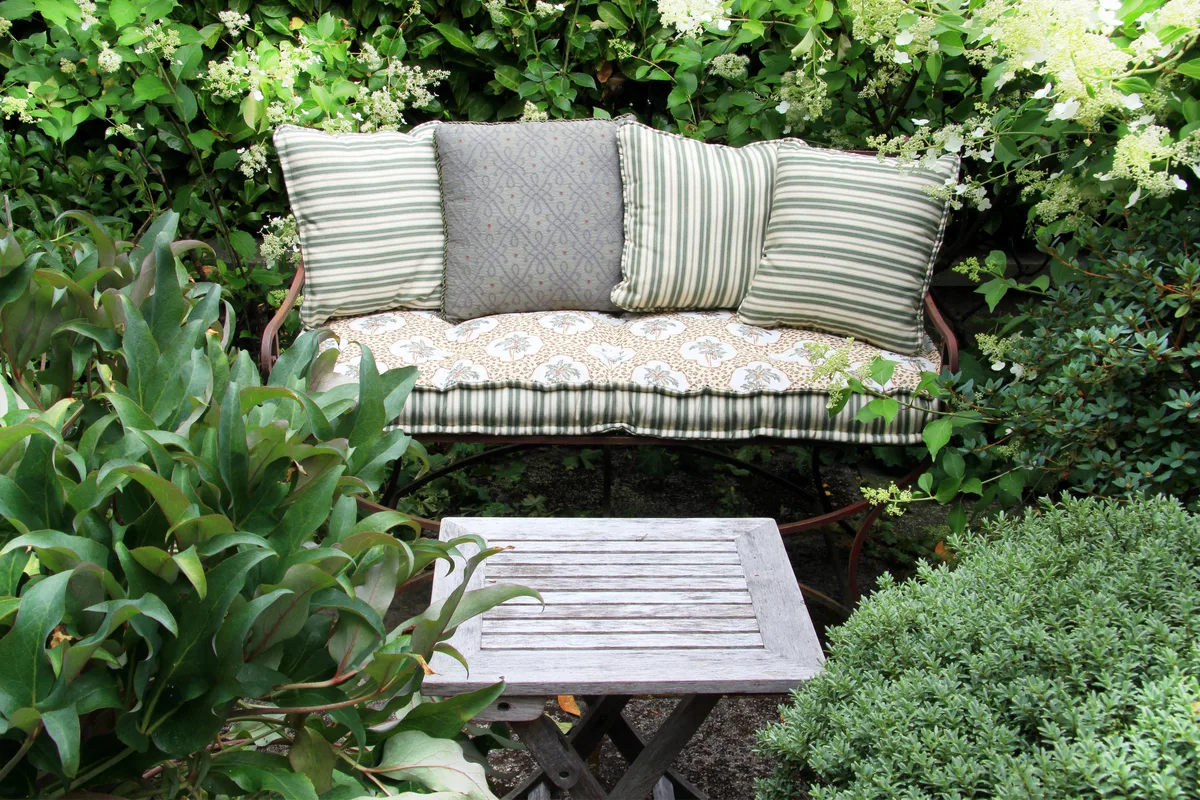
I don’t know how many people would consider their yards as outdoor living rooms. But once I started thinking about my yard and garden in those terms, I experienced an undeniable shift in mindset about what is and isn’t possible in my outdoor space.
When it comes to designing a living space – either indoors or outdoors – the best advice is to start with what kind of activities you envision yourself and your family doing in that particular spot.
For my outdoor living space, I started with three things in mind:
I want to have my morning coffee outside when the weather is nice in late spring, summer and early fall.

I want to be able to just step outside to clear my mind in the middle of my workday. (Like many others, I work mostly from home nowadays.)
I envision myself entertaining a small group of friends on a balmy summer evening and sometimes even lounging with a glass of wine and watching a movie outdoors, weather permitting.
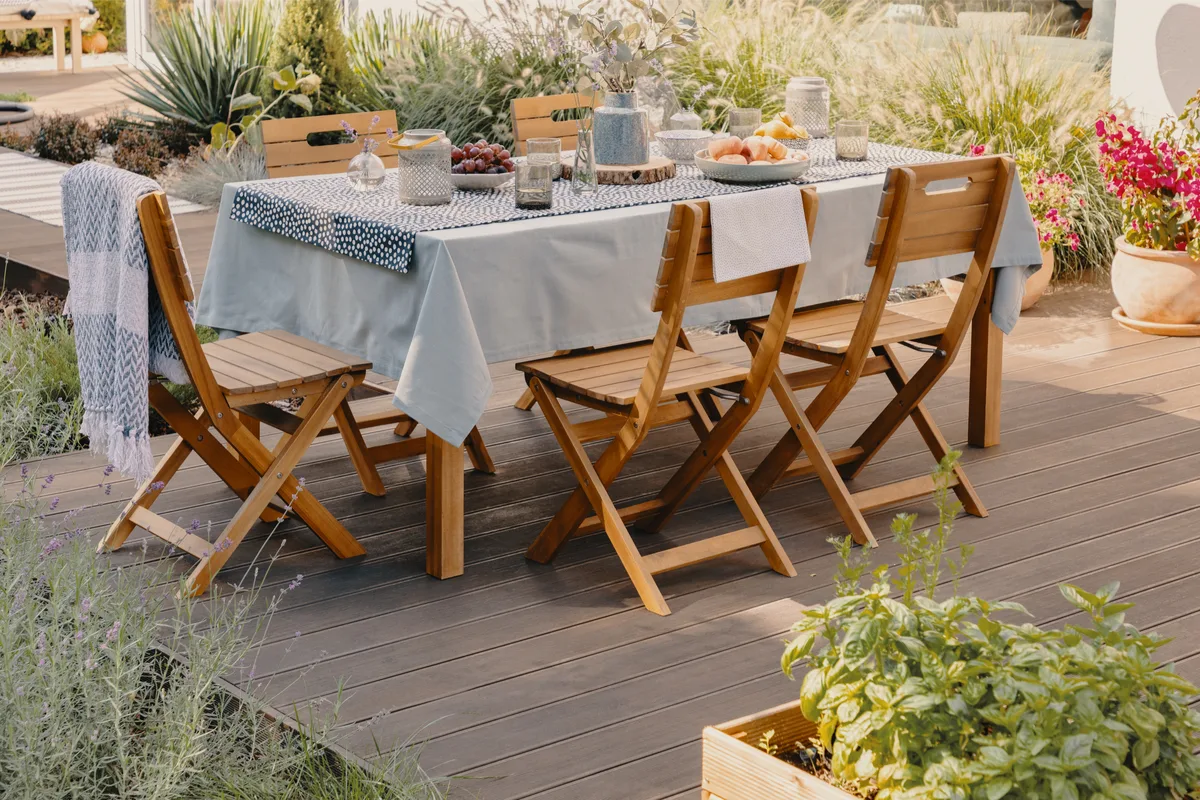
Whatever your goals for your outdoor living room, here are my best tips on how to bring this project to completion just in time for summer.
1. Start by defining the boundaries of your space.
In indoor spaces, the boundaries of the space are often already defined for us – rooms have walls, doors and a ceiling. But when it comes to outdoor living rooms, this is the step we should start with. First, because we want our space to feel cozy, and we also want it to be safe. So defining the boundaries of the space has both creative and practical considerations.
Let’s start by thinking about how we want to enclose the space.
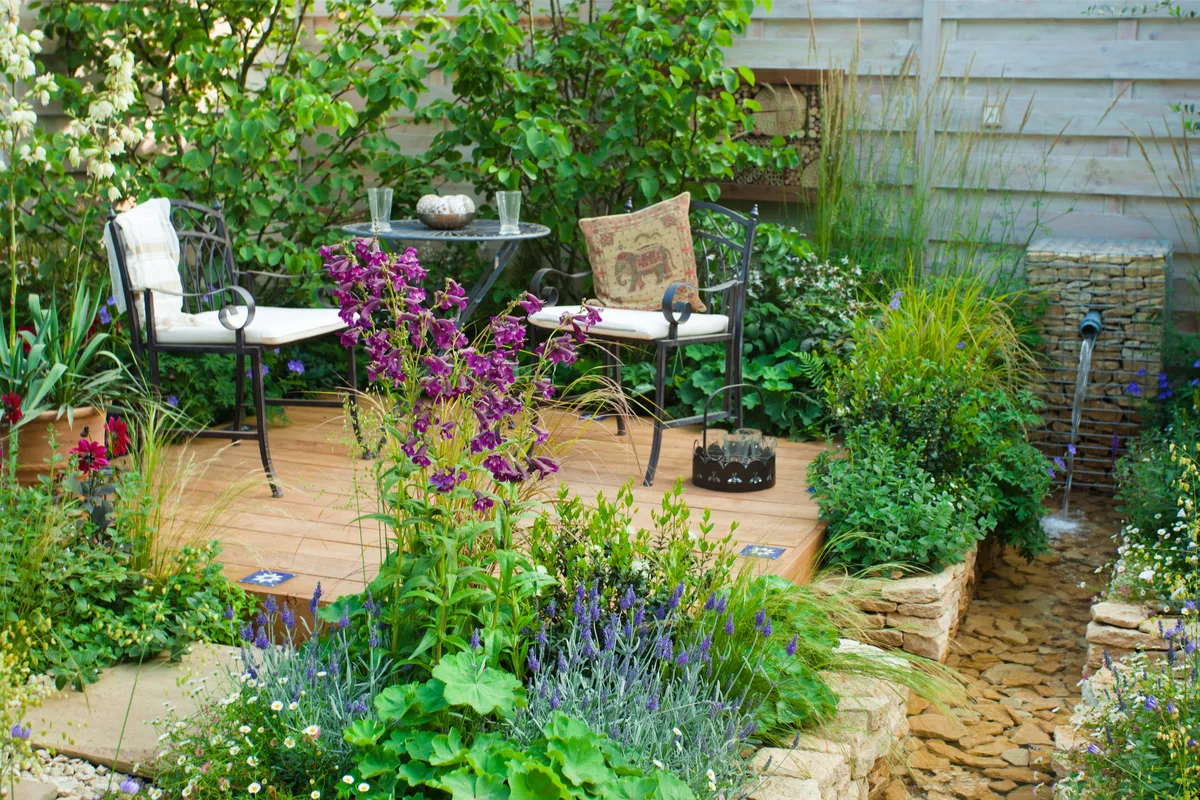
One option would be to surround your garden with a row of hedges – a row of boxwood hedges broken up in spots by additions of hydrangeas or rhododendrons would be a good green option. For a more permanent structure, you could opt for building a pergola for trailing vines (Dutchman’s pipe, trumpet honeysuckle or cypress vines are great structural support) or a lattice that could work as a privacy screen.
Depending on the configuration of your garden, you may need to add a windbreak – either in the shape of plants (they have to exceed the height of your seating area to make a difference) or structures such as trellises, lattices or fences.
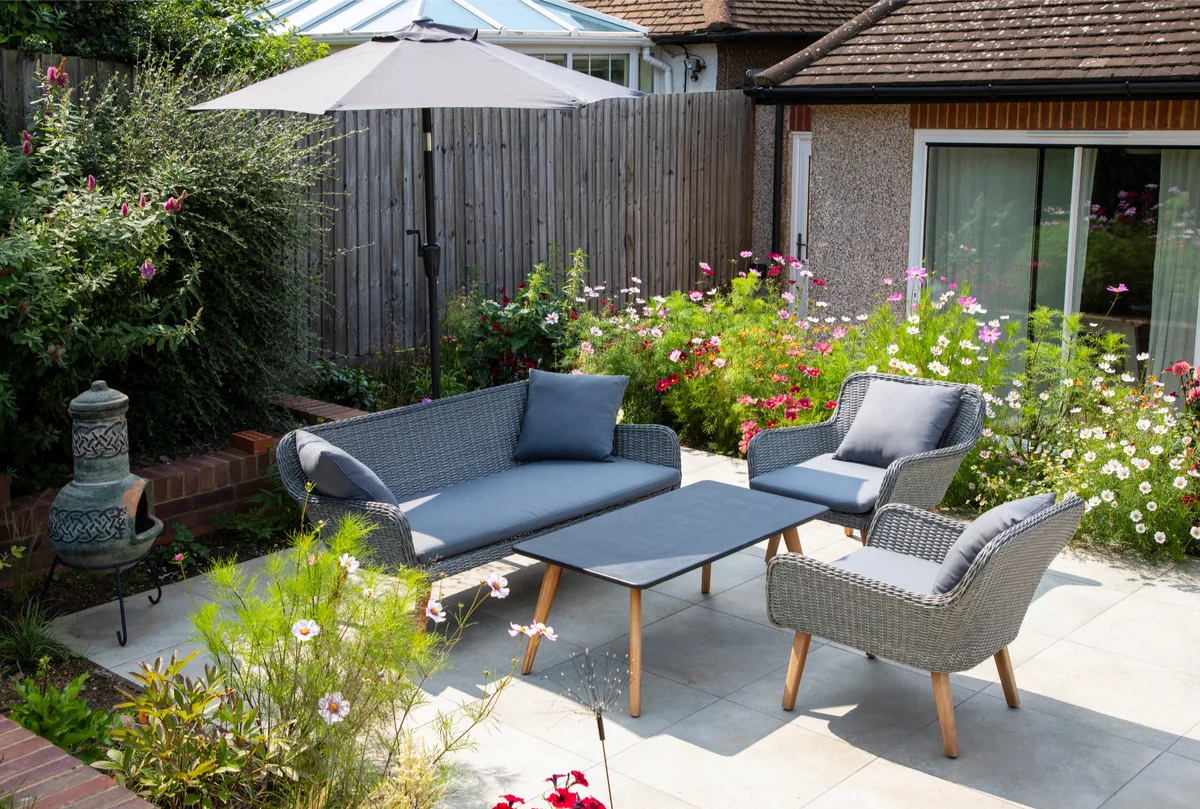
If you’re working with a low budget, how about creating an enclosure by planting a container garden. You can grow an array of plants all year round, swapping spring bulbs (tulips, narcissus, fritillaria and hyacinths) for summer ones (lilies, callas and cannas make for a spectacular combination) and then indulging in the sweet warm colors of marigolds and chrysanthemums in the fall.
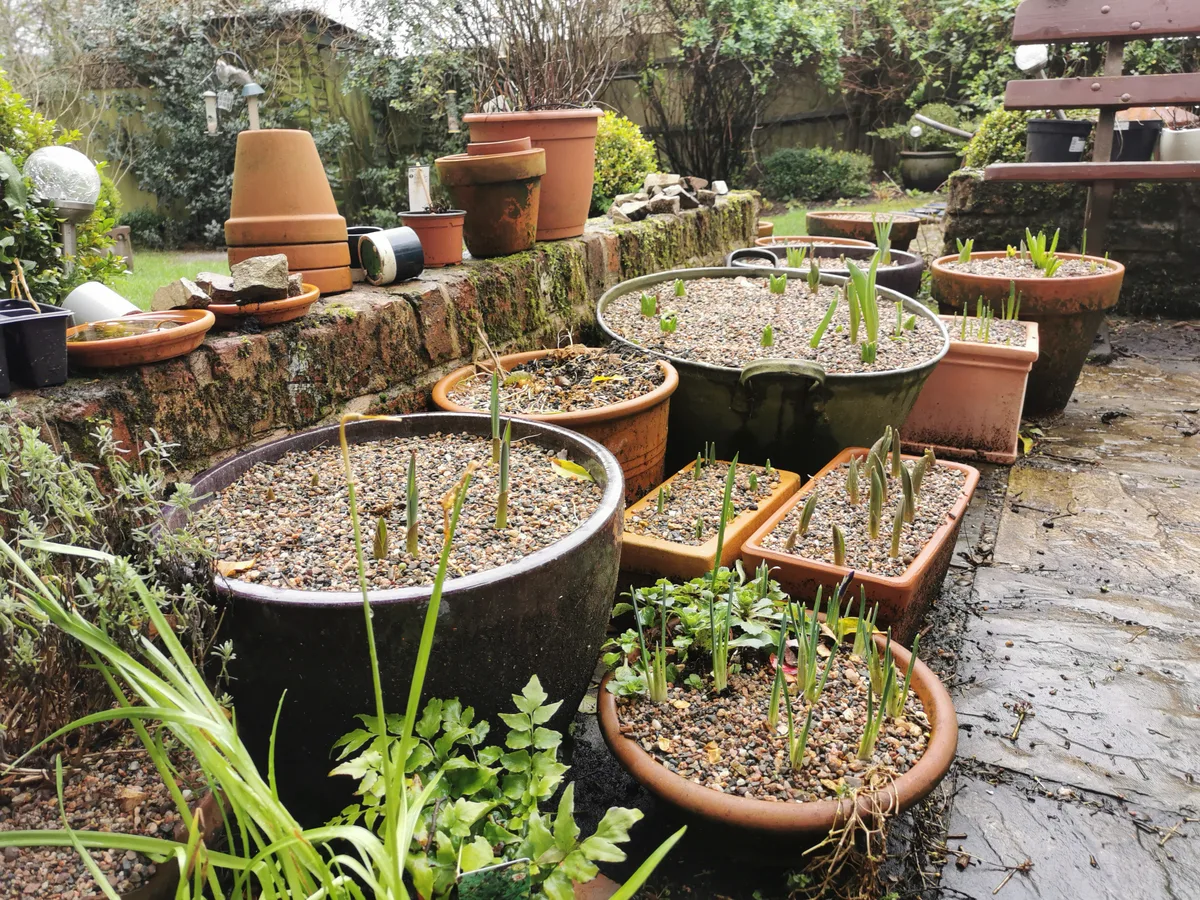
One of the advantages of container gardening is that your choice of enclosing materials is quite varied – from terracotta to wood to glazed ceramics. And you don’t even have to limit yourself to traditional flower pots. You can get creative by repurposing different containers – ranging from buckets to wheelbarrows, tubs and baskets.
A container garden enclosure is also an excellent choice if you’re renting and want to be able to take everything with you when you move.
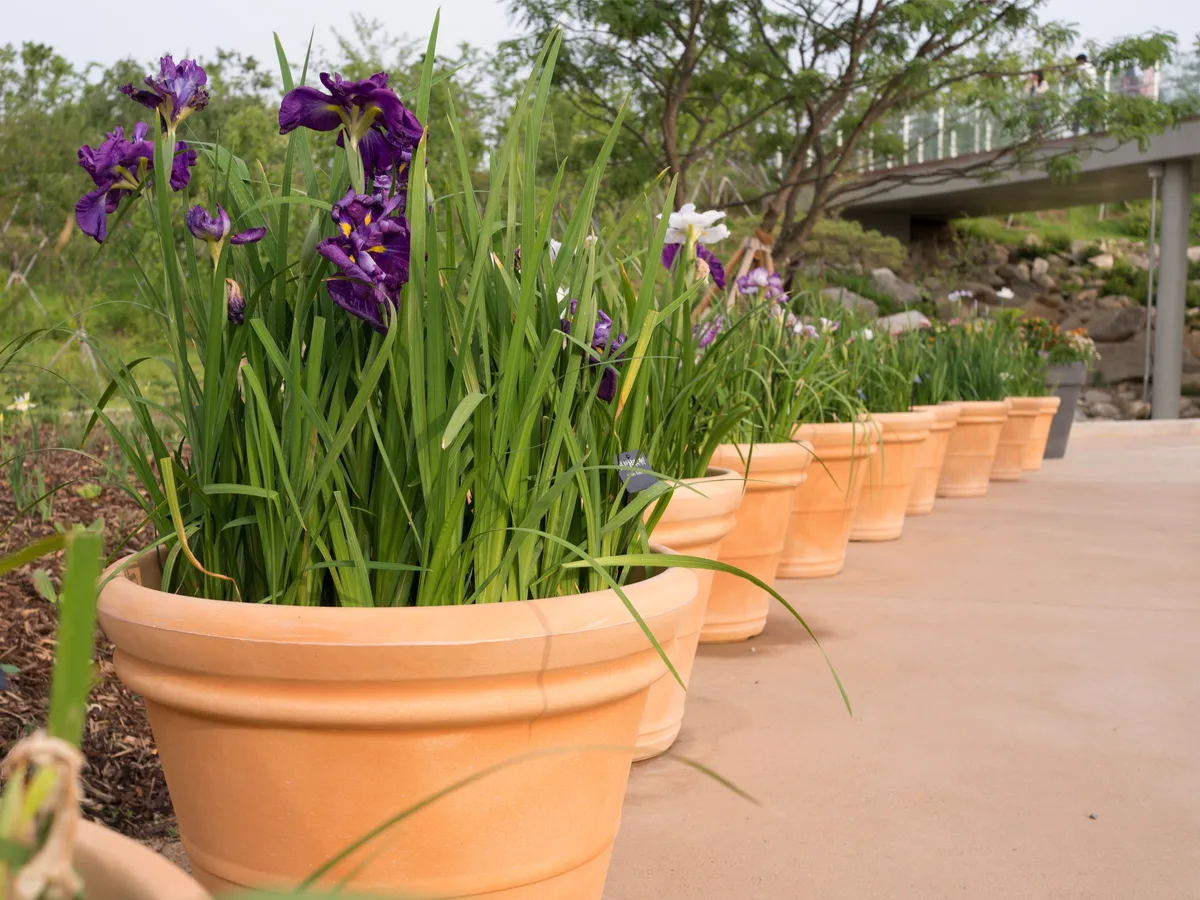
2. Decide whether you need to create shade.
The pattern of daylight is a key consideration when designing outdoor spaces. Start by familiarizing yourself with the way the sunlight falls on different parts of your yard at different times of day – keep in mind that this will change throughout the seasons.
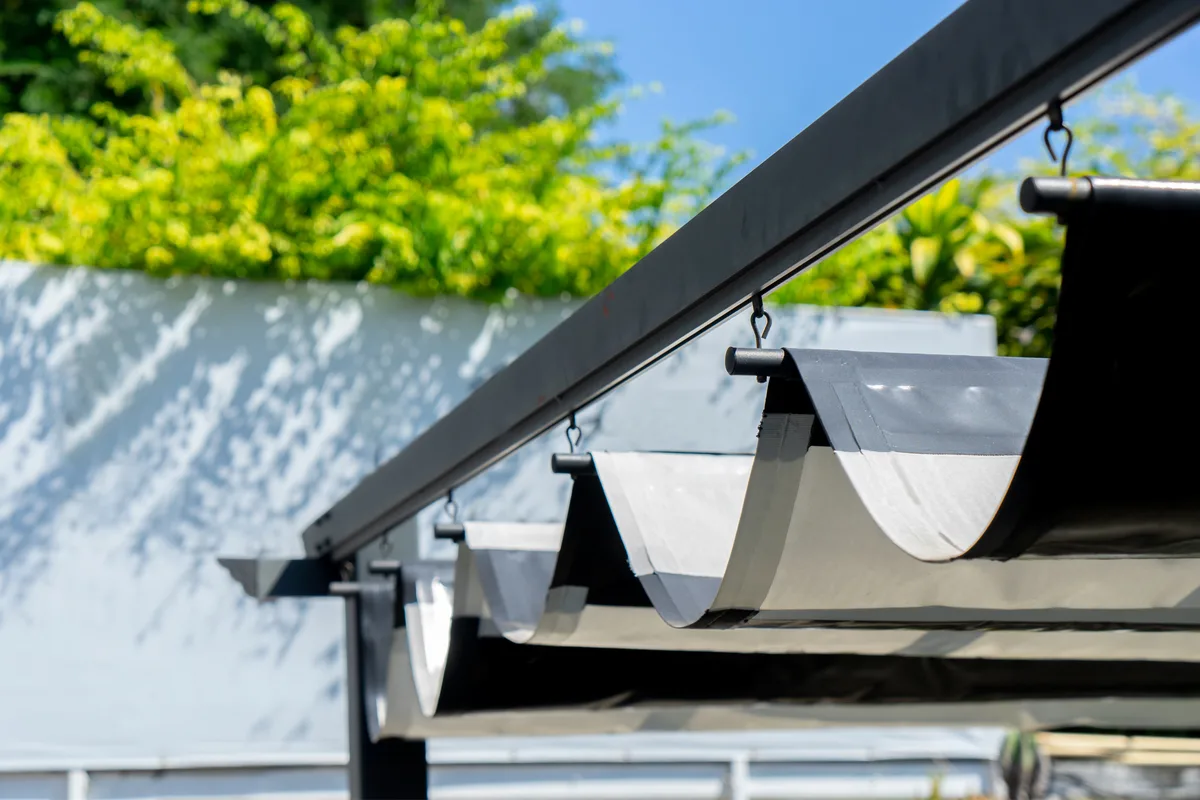
Which spot is the sunny spot? Where is the shady spot? Do they match your intentions for the space? For example, you may be looking for a bit of extra sunshine in the morning, but when you’re entertaining your friends you want to be able to see each other without squinting. Or you may be looking forward to getting a suntan in the middle of summer without having to move your outdoor furniture too much.
Going back to what you want your space to serve as, decide whether you want to incorporate elements of garden shade, such as pergolas or awnings. These also add a new boundary to your outdoor space, keeping it cozy in the evening and sheltered in case of rain.
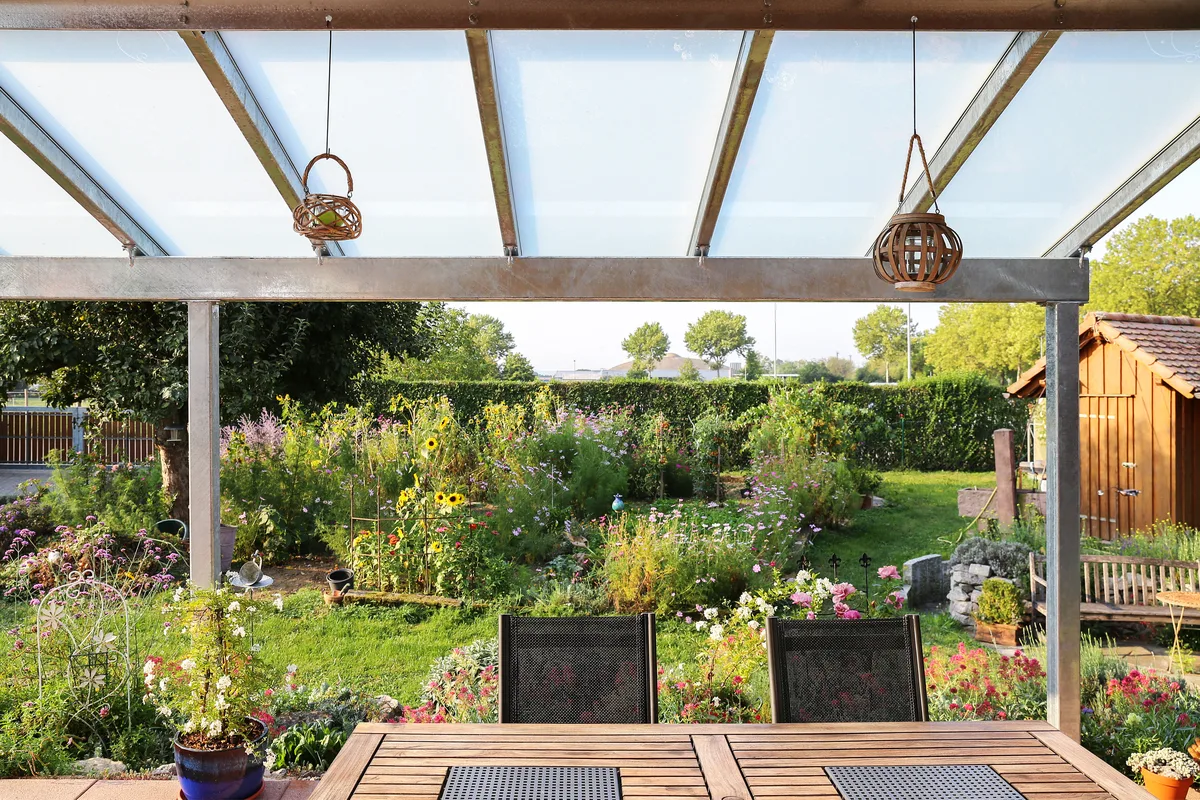
Again, if you’re working with a lower budget – or if you’re a renter – there are other less permanent options for creating shade. You could opt for patio umbrellas (the cantilever ones are particularly elegant without breaking up the flow of your seating arrangement) or shade sails (that come in triangular and rectangular shapes).
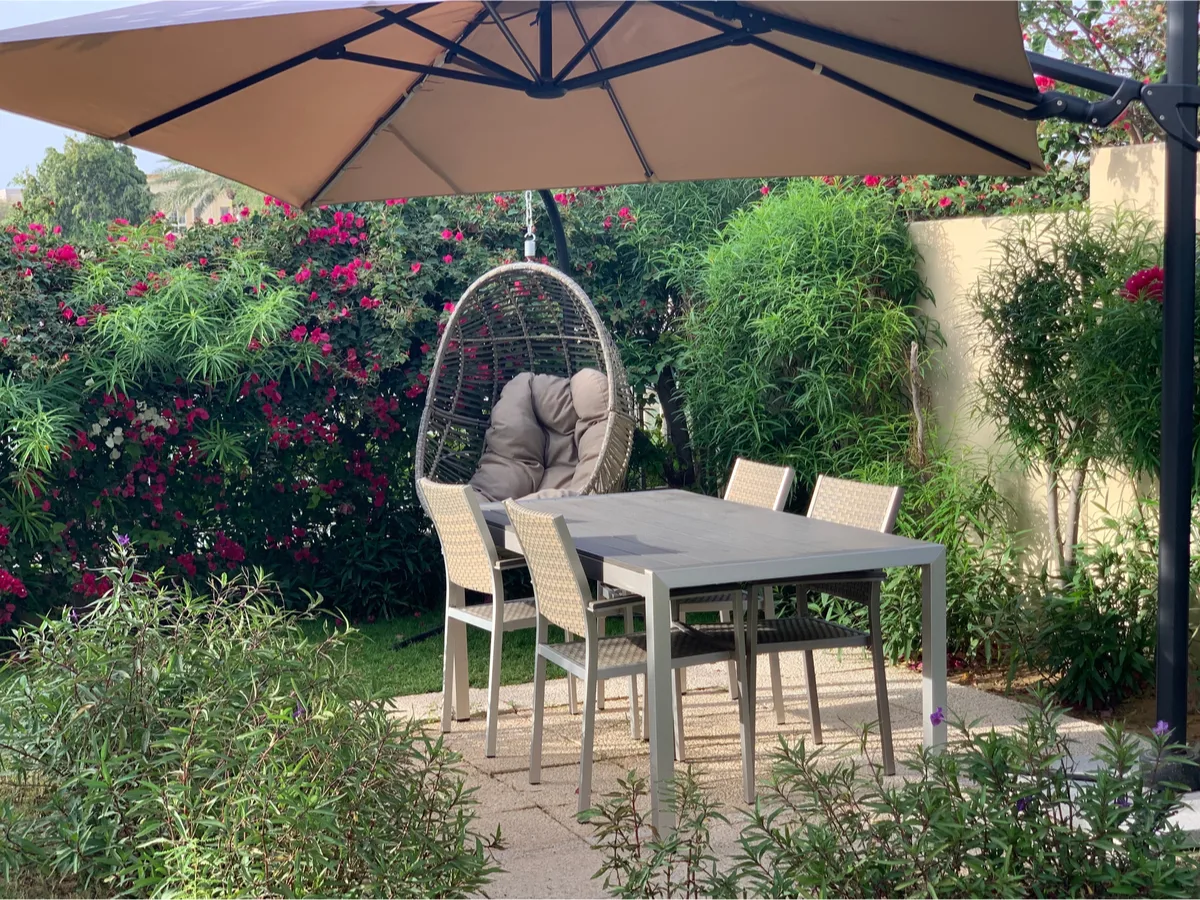
No matter what you choose for shade, or if your shade is already provided by other structures (such as walls, fences or even your house) having a place to retreat to during the hottest part of the day means that you can use your outdoor living room throughout all hours of the day.
3. Set up a comfortable seating area.
Now that you’ve defined the boundaries of your outdoor living room, it’s time to add furnishings. There are so many considerations to keep in mind when it comes to choosing outdoor seating.
Perhaps my most valuable piece of advice on this topic is this: think about what you’ll end up doing most of the time. If you’re anything like me, you’ll dream about entertaining friends and family regularly and hosting trivia nights or make-your-own-cocktail extravaganzas.
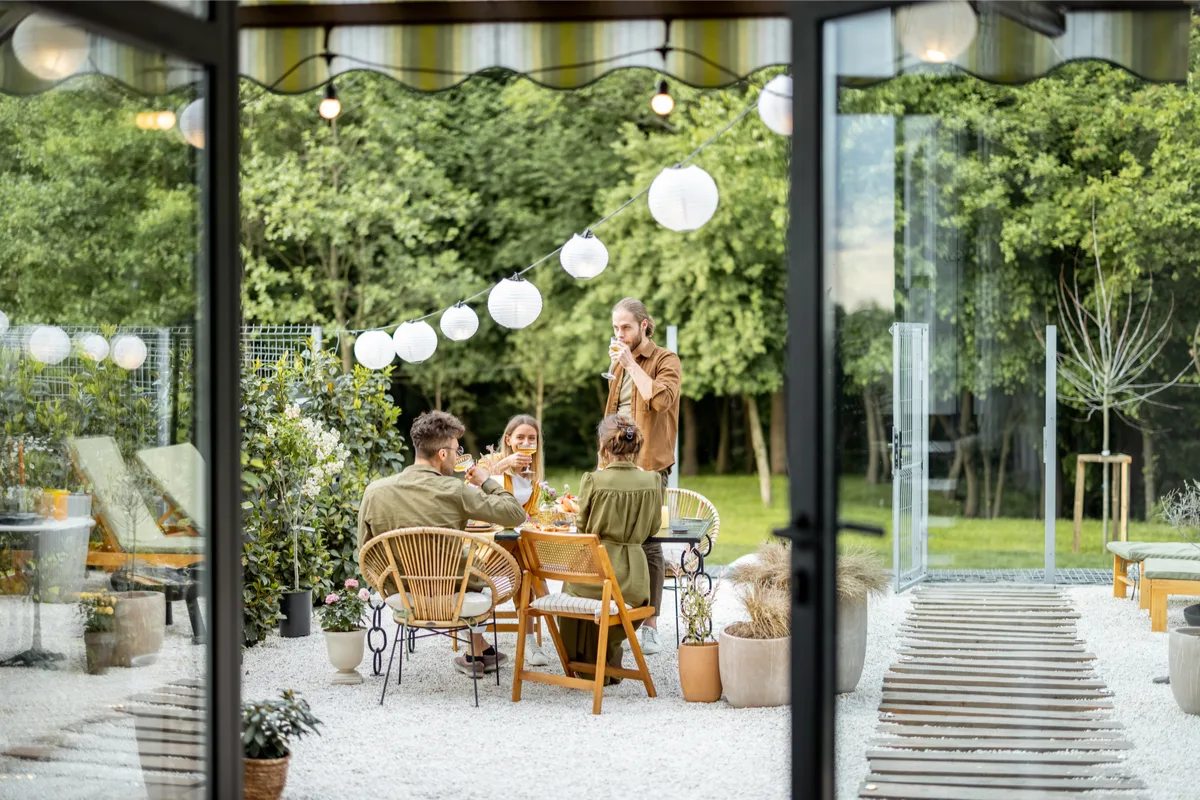
The truth is, you’re more likely to be spending time in your own backyard having a quiet lunch with your immediate family, so the extra-large patio set that you ordered is now just a cumbersome addition that you have to maneuver around every day.
So rather than oversizing your outdoor furniture, opt for right-sizing it.
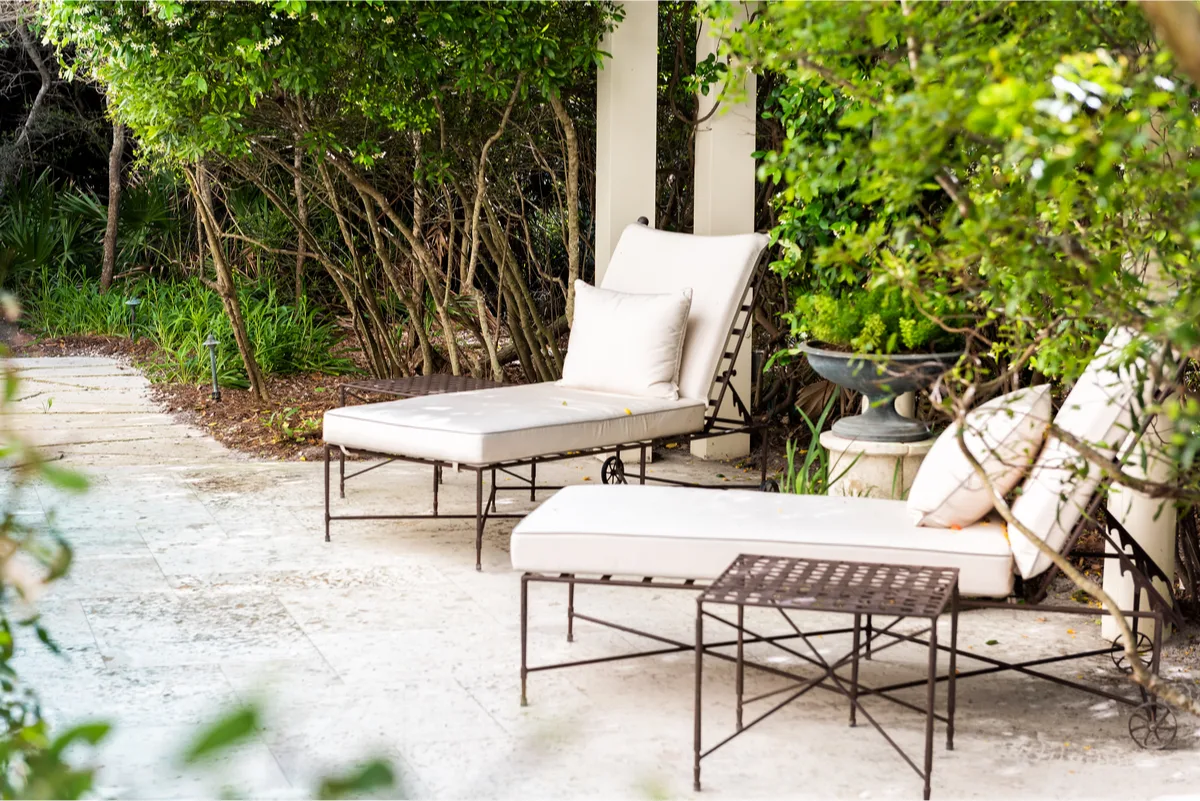
There are so many options of patio furniture to choose from – ranging from light aluminum frames (for an industrial look), wrought iron (the most durable option) and wood (if your heart is set on a rustic style) to woven furniture made of rattan, cane or wicker. If you prefer the Scandinavian style, you could go for the elegant lines of teak and acacia wood.
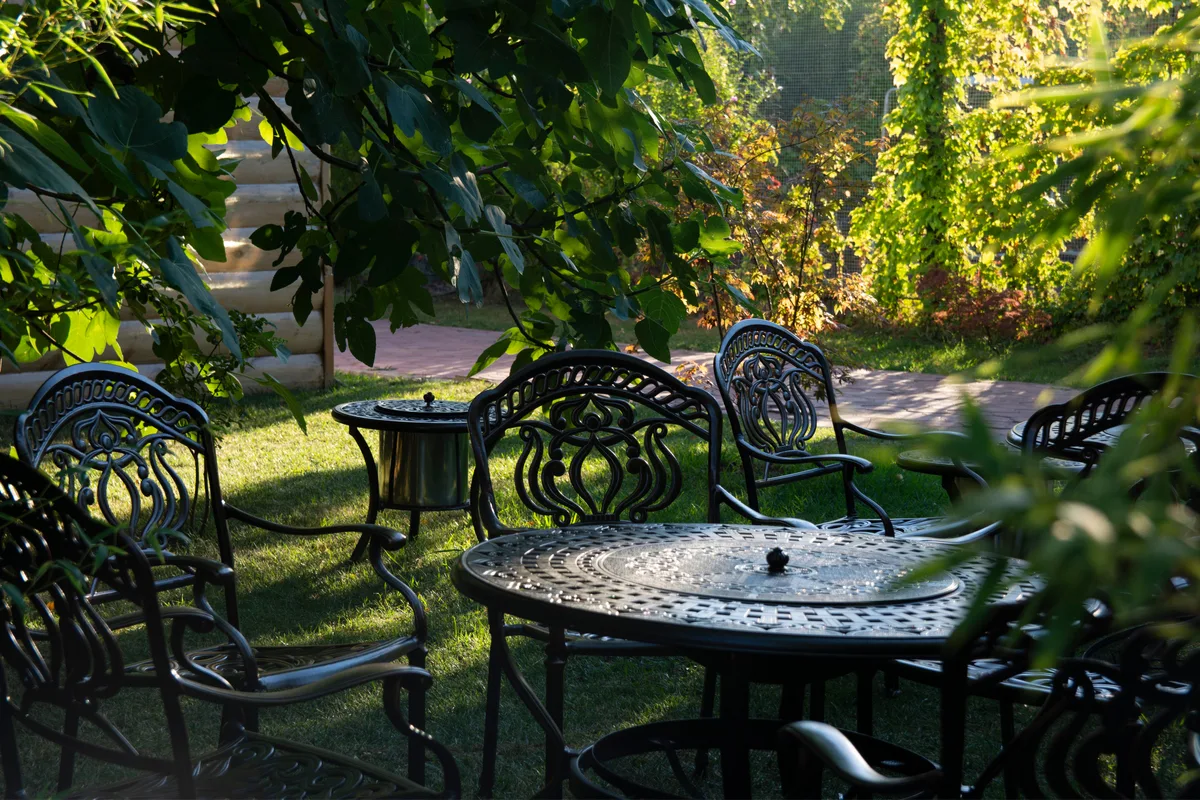
The advantage of choosing warmer materials such as wood and wicker is that you could use your outdoor furniture indoors – say in a conservatory, a sunroom or an enclosed porch – once the weather turns colder in the fall.

4. Start adding accessories.
Now that you’ve chosen the backbone of your outdoor living room decor, it’s time to accessorize. Think of investing in comfortable pieces that can be easily stored away during the cold winter months. Layer up your chairs and benches with plenty of cushions, add floor cushions for extra seating space and think about designating some blankets for outdoor use on chilly summer nights.
Candles are a guaranteed way to add warmth to any outdoor nook, with votives and tea lights being the safer choices outdoors (compared to pillar and taper candles).
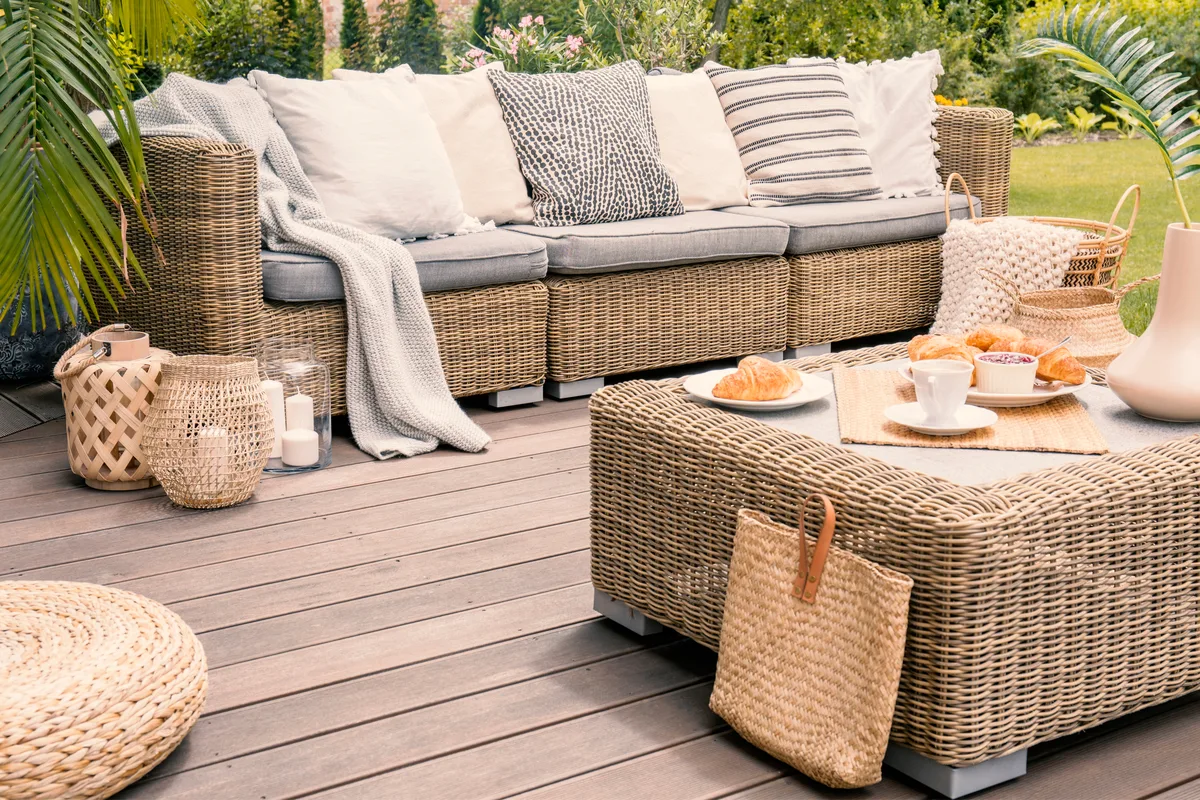
5. Select your two types of lighting.
The best way to transform your outdoor living room into a cozy space come sunset is with the careful addition of several points of light. Gone are the days when our only outdoor option was a single porch floodlight.
Just like indoors, outdoor lighting should have a dual role: providing practical overhead illumination (nobody likes to have dinner in the dark, after all) and creating a soft homely atmosphere.
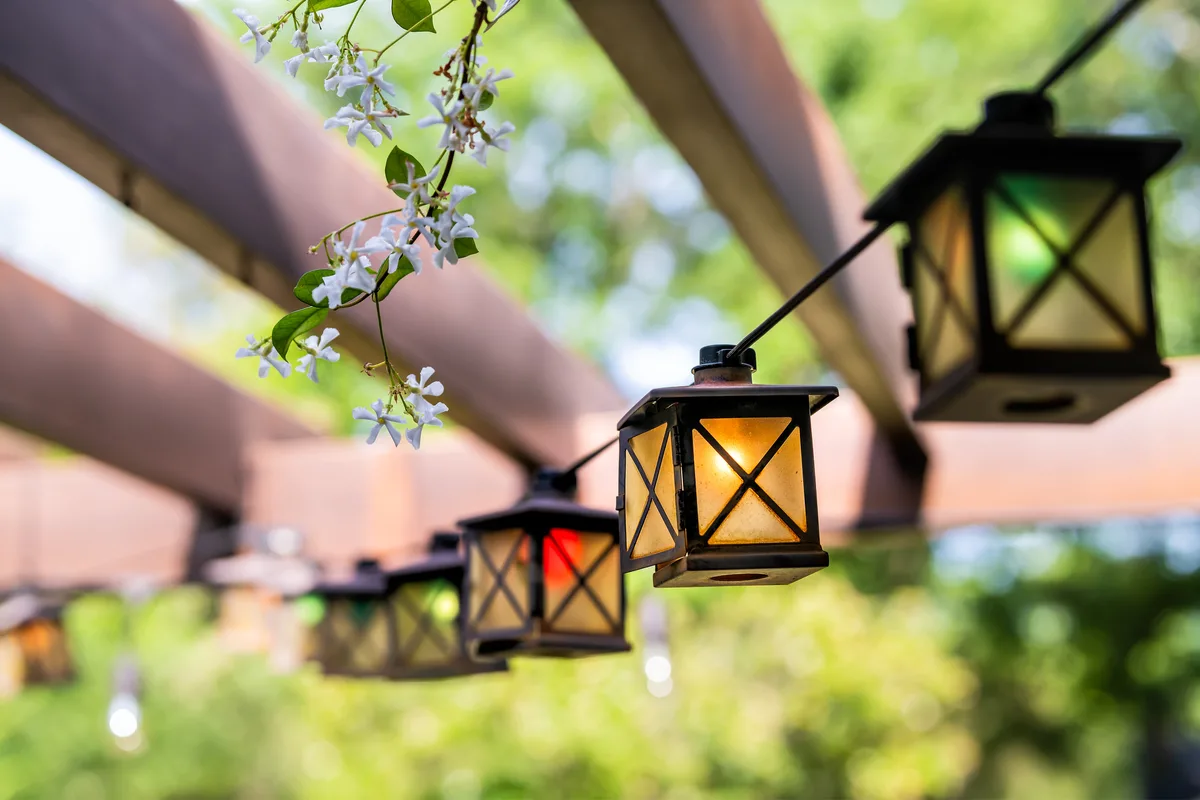
So start by adding functional overhead lights first. When choosing your overhead light, you should size up and opt for a design that doesn’t diffuse the overhead light too much for the space you’re trying to cover. However, the light above the seating area should still be warm and soft.
For a calming and cozy ambiance, here are a few ambient lighting options:
A string of garland lights can set the mood for an alfresco dinner party;
LED paper lanterns add a bit of magic to an outdoor space, but should only be used under an awning or a pergola, not out in the elements;
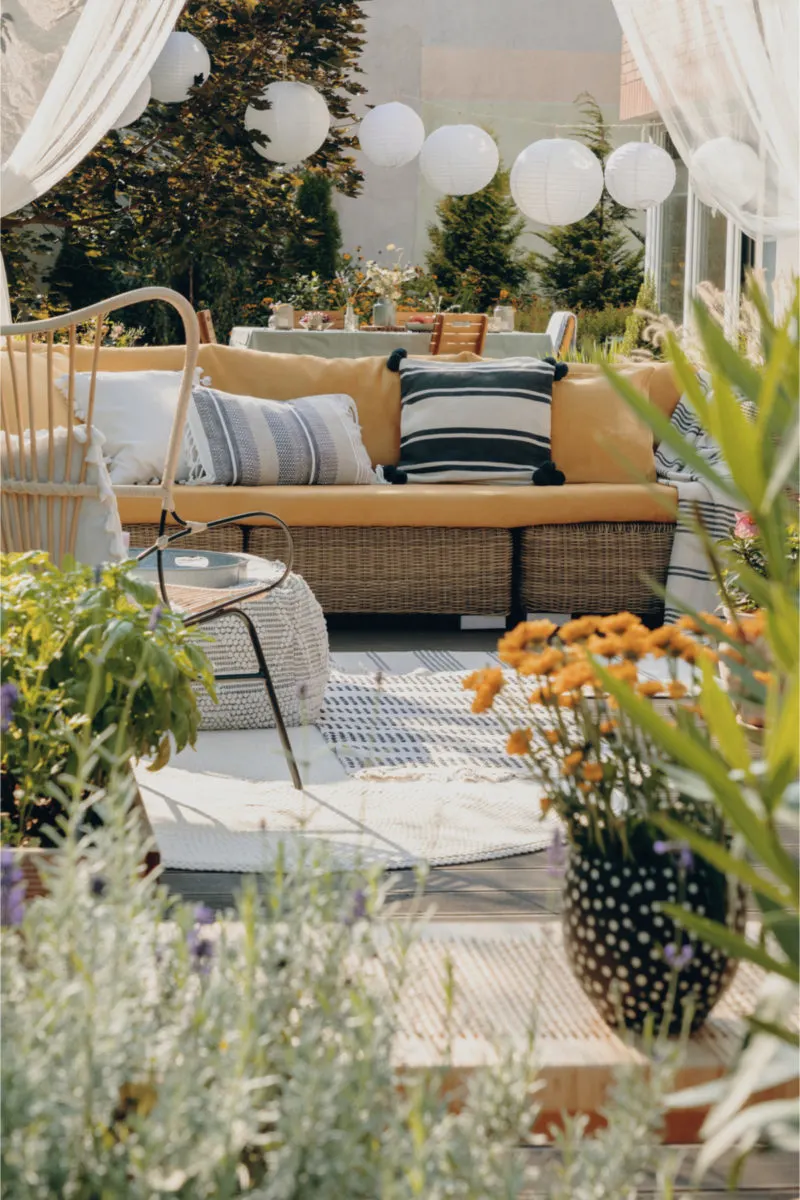
Tiki torches or solar stake lights can be used to define the space and illuminate the paths to your outdoor living room;
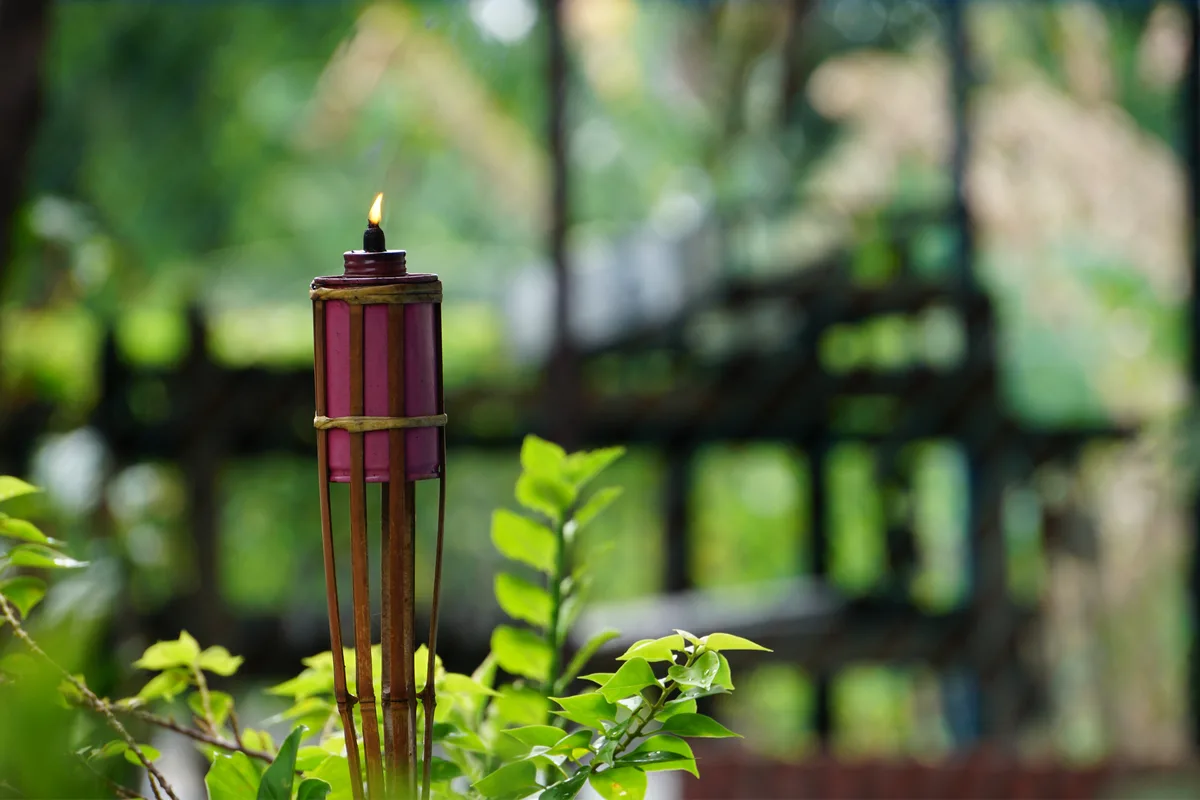
Add vertical lights on structures such as pergolas, trees and trellises, uplighting them for a theatrical effect to your space.
Hurricane lights are beautiful and add a romantic touch even to outdoor spaces; for a safer option, you can opt for battery-powered lights instead of the classic candle or oil hurricane lamps.
6. Install a focal point.
What would you say the focal point is in your living room indoors? Is it your TV? Maybe a fireplace? Or a beautifully framed mirror?
How about opting for the same focal point in your outdoor living room too?
Mirrors are a great – albeit not so common – addition to an outdoor living space. But they have the power to totally transform any space by making the space seem bigger and reflecting daylight from different angles according to how the light moves in your garden.
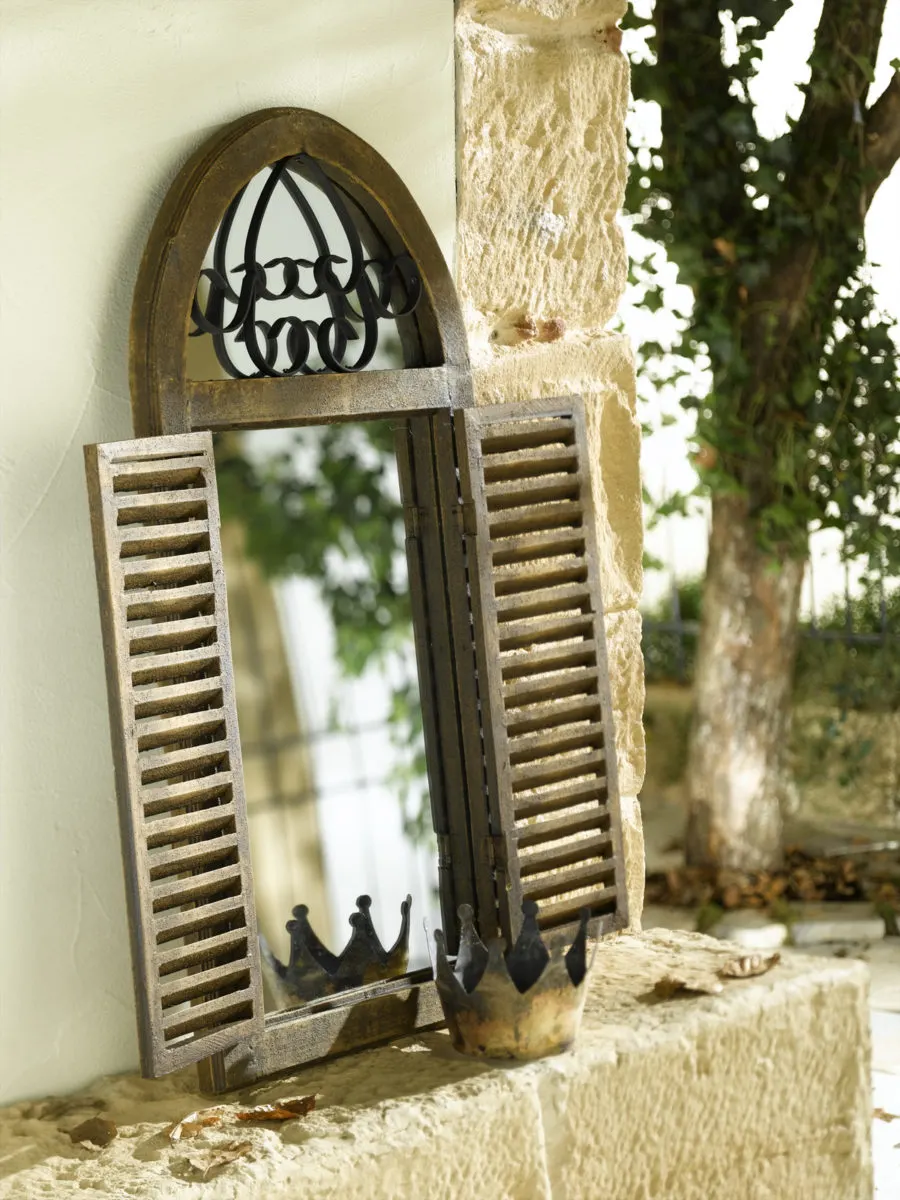
Fire pits can be the outdoor equivalent of the living room fireplace, a fixture in many homes. You can choose to build a permanent fire pit, or opt for a more portable design on wheels. The warm glow of the fire is a great place to gather around and offers the perfect excuse to spend some time outdoors even on chilly nights. Just think of all the marshmallows you can roast!
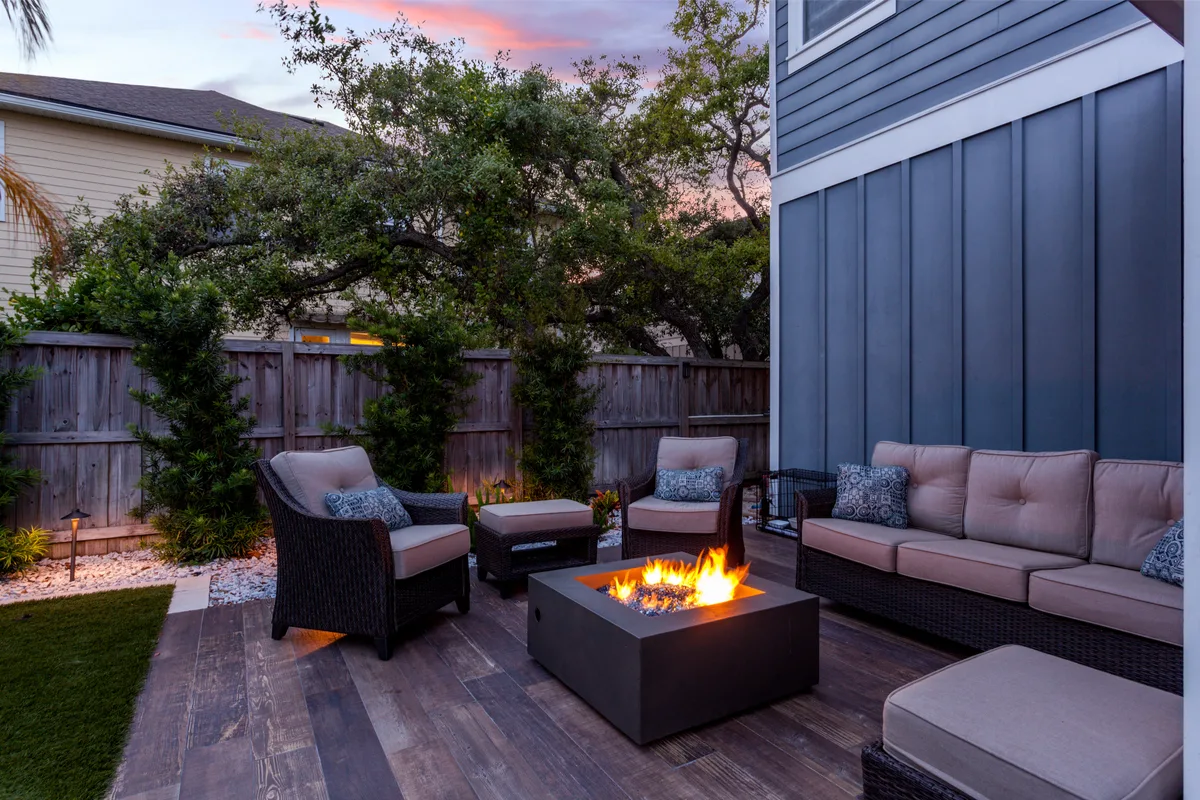
Another relaxing outdoor design element is a water feature. And you don’t have to go full aquascaper to enjoy the soothing sound of running water. There are some beautiful off-the-shelf water features that are really easy to install. And with so many choices available, even a small fountain or water globe can offer another opportunity to match your decor.
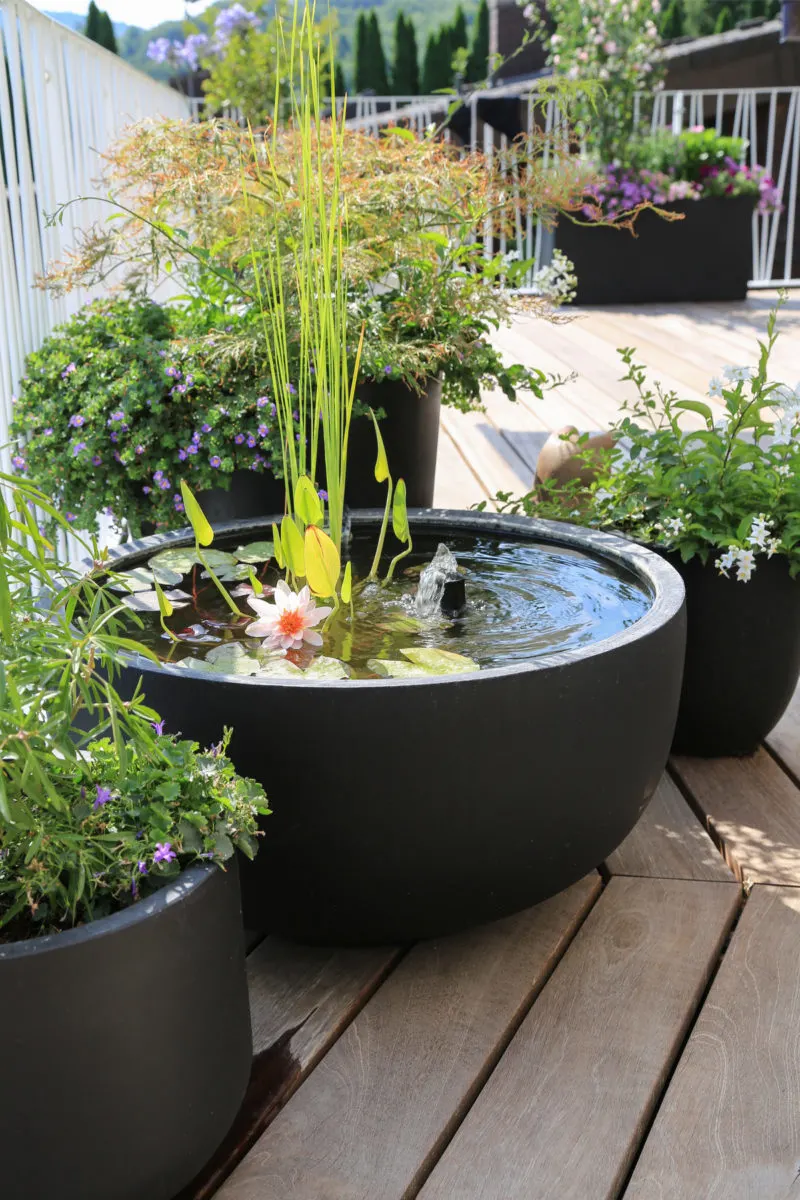
7. Is a rug the right choice for your space?
I admit, I didn’t always see the point in having a rug outdoors. In my mind, rugs were for keeping your feet warm indoors and keeping the dust off well-polished wooden floors. But having a rug as part of your outdoor living room decor can be a game-changer.
Don’t just settle for gray and beige patio rugs. Nowadays, there are many patterns and colors to choose from, rivaled in choice only by their indoor counterparts.
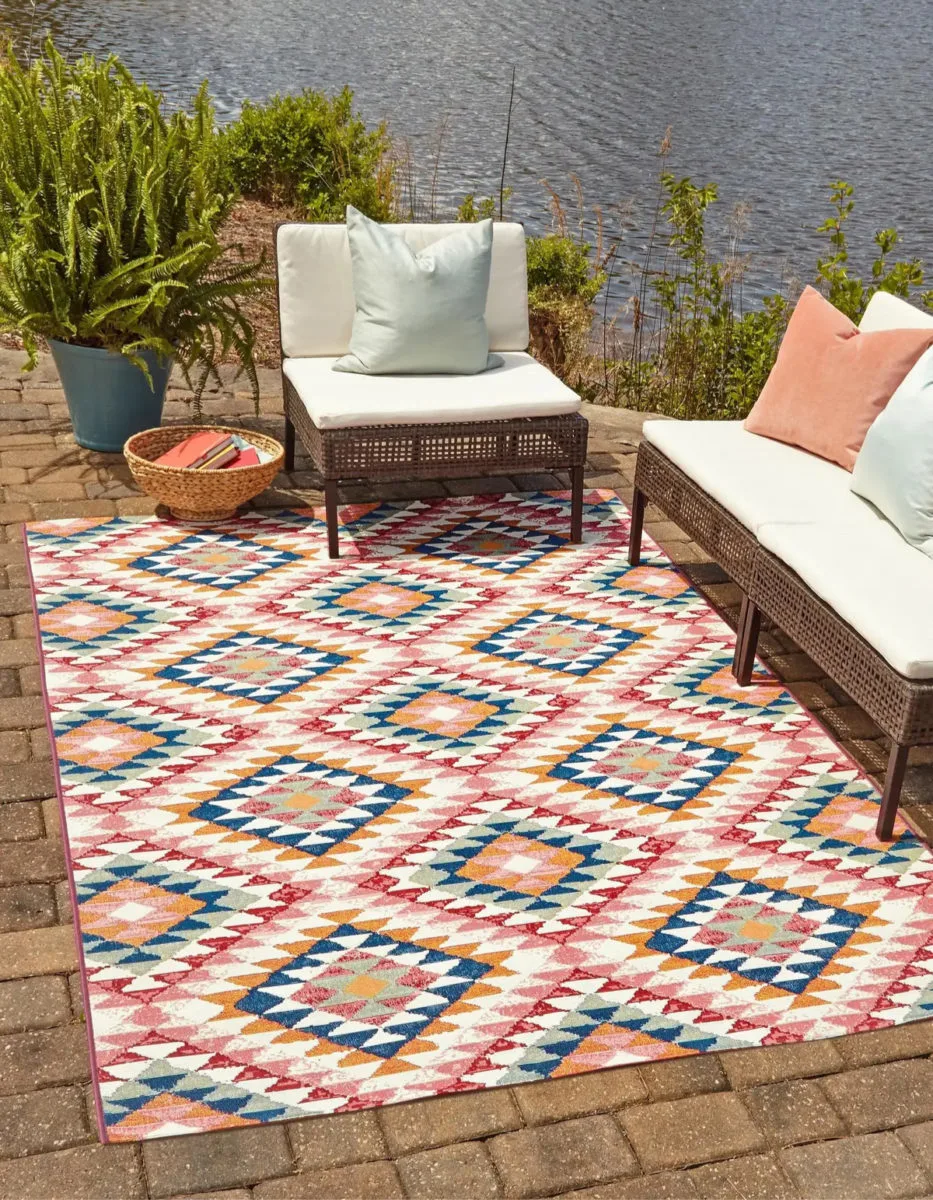
Just in case you worry you’ll have to go through one rug a year, rest assured that outdoor rugs are durable and meant to withstand all types of weather throughout the summer, from really hot days to really heavy rain. Most rugs are made of polypropylene, so all they need is a quick wipe after a particularly rainy day. If you’re not a fan of plastic, you can also find rugs made of natural fibers such as sisal, seagrass and jute.
However, you should roll up your outdoor rug and store it in a covered area during winter.
8. Add some storage spaces.
Storage spaces are much needed indoors, and they can be just as essential outdoors. What is there to store outdoors? Lots of things: starting from the seating cushions, blankets, candles, trays, umbrella covers and even small gardening tools.
Storage spaces can be as sturdy as a chest of drawers, a double-duty banquette, a deck box or a slim shed. If you don’t have that much space to work with, how about opting for baskets and crates?
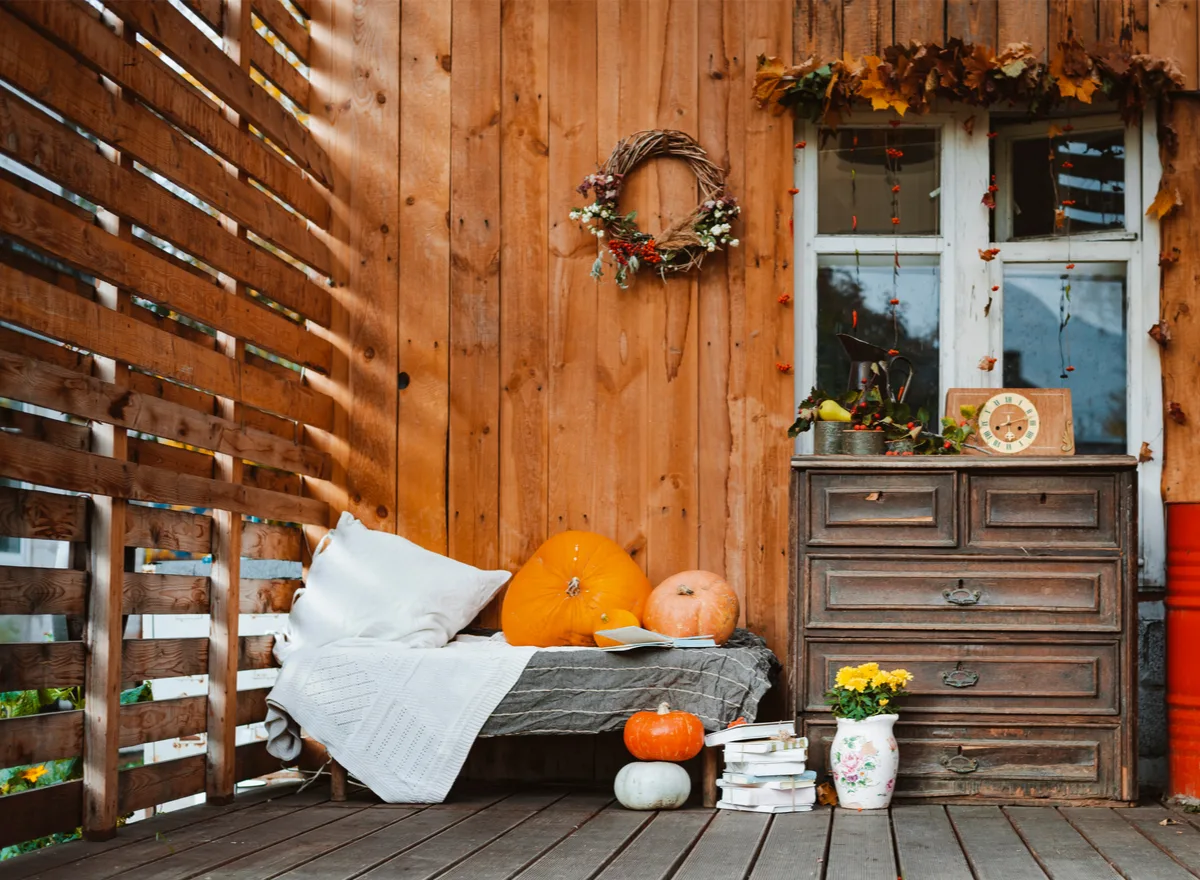
9. Designate a comfortable spot for your furry friends.
In my (biased) opinion, no cozy nook is complete without a comfy spot for our pets. Whether they get to lounge on a cushy bed, in an enclosure or on a perch, it’s important for our pets to enjoy the fresh air and our company during long summer days when we’re more inclined to spend time outdoors.

10. Add whatever boosts the ambiance factor for you.
This last tip is a bit vague on purpose because what constitutes a pleasant ambiance is a very subjective factor. For me, the atmosphere of any space can be enhanced by subtle fragrances. That’s why any outdoor space that I design will invariably include fragrant plants such as lavender, lilac, Thai basil, lemon balm and jasmine.
For my partner, the atmosphere is significantly improved by having music playing in the background, so weather-resistant outdoor speakers are a must. And for others still, there’s no better predictor of having a relaxing afternoon in their backyard than easy access to a hammock.
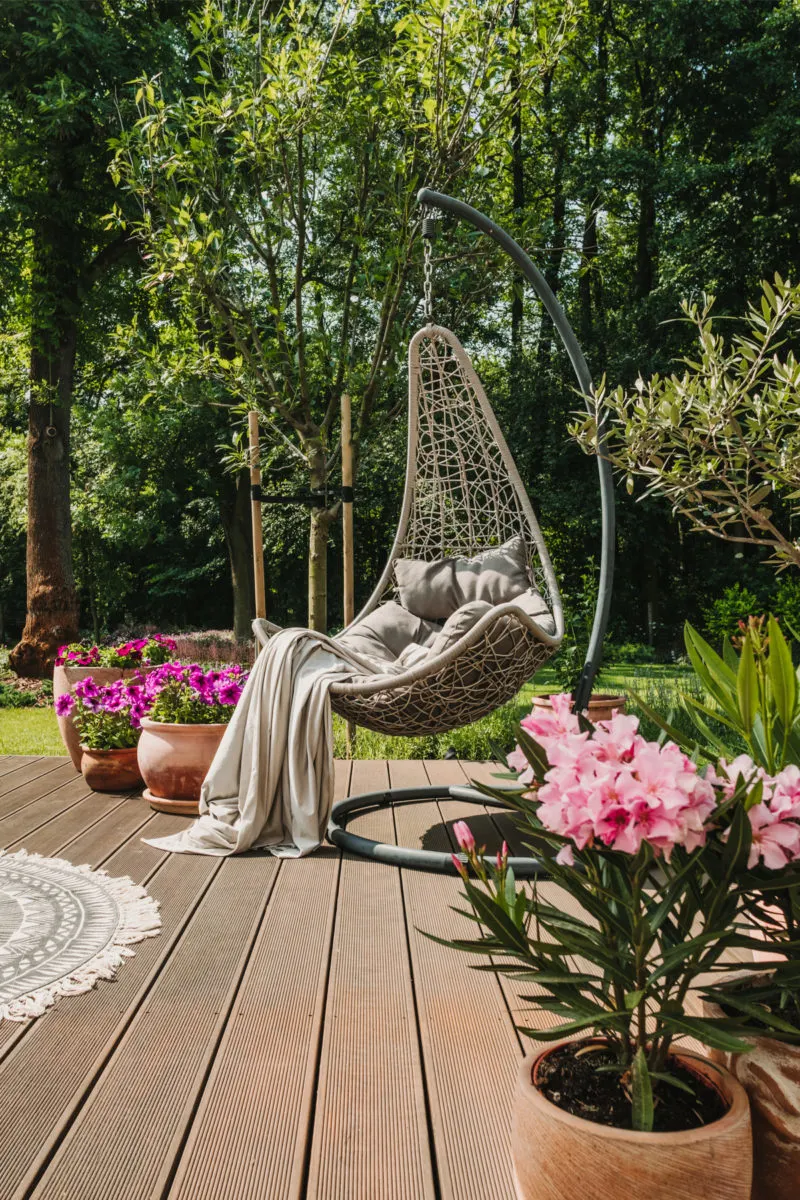
I understand that such a long list of tips for setting up an outdoor living room might look a bit intimidating. But remember that you don’t have to buy everything in one shopping trip, or even in one season. Make sure you research what you’re buying and choose quality and durability wherever possible. No matter the size of your garden, patio or outdoor space, there are simple ways to make it feel like an extension of your home without sacrificing comfort.
